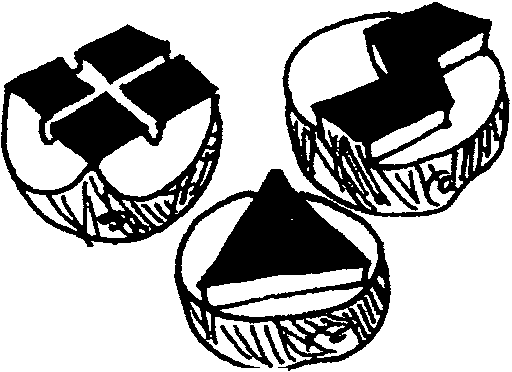Конспект урока «Writing for» по английскому языку для 7 класса
Writing for the 7th form.
Introduction: I'm sure that writing skills are necessary for the students of the 7 form students, as it can help to improve their ability to express their thoughts, feelings and intentions in English. Writing can help them to increase their vocabulary and teach them to use it in their oral and written speech.
The aim is to develop in learners the ability to write effectively in English for a range of useful purposes.
It focuses on two central areas:
-
the organizational conventions of particular text-types (what the 'product' is like)
-
the skills a writer needs to approach and see through particular writing tasks (what is involved in the writing 'process')
It's very important to show students what we know about how people write and how texts are structured and encourage them to become better writers.
Students will deal with different text-types and while studying text samples students will see what we understand by 'good' writing.
The purposes are:
-
to study developing handwriting and punctuation skills.
-
to show various aspects of writing process (planning, drafting, editing etc.)
-
to demonstrate particular types of writing ( fiction, poetry, non-fiction, letters etc.), point out and discuss the particular characteristics and features of each text during class discussions
-
to encourage students to learn from those samples and base their own writing on them
The activities:
The activities have to support the development of essential writing skills and also focus on the technical side of writing. ( especially developing punctuation skills) they also have to teach students various sides of the writing process, such as planning, drafting, editing etc.
To gain maximum benefit from studying writing I have tried to find texts which could be interesting to read and discuss while studying different topics .
Working with the texts:
a)Introducing and tackling the texts
-
study key aspects of the text
-
discuss them together
-
ensure students have a good grasp of literal meaning of the text and any vocabulary they may not have met before
-
study particular characteristics and features of the type of text
b) Writing a plan and some writing based on the text.
-
It consists of writing a rough draft and then refining it, before writing and finishing text
-
Handwriting or spelling are not very important at this point
-
At this stage students should be encouraged to make changes to the text to make it more interesting, accurate or exciting, by crossing out unwanted words or sentences around, adding things or moving words or sentences around.
c) A final check
-
Communicative quality
-
Logical organization
-
Layout and presentation
-
Grammar
-
Vocabulary
-
Handwriting, punctuation and spelling
Texts should be arranged according to the contents of the student book and student's needs. Writing will take place once a week .
Literature.
-
"Writing" by Louis Fidge, (Macmillan).
-
"Outlines" Andy Hopkins, Chris Tribble. Longman Group UK Limited 1989
-
"Writing composition" Teacher's Book 3-4 Macmillan foundation skills

Steps to help you write well
1. Planning
-
Decide what sort of writing you are going to do.
-
Talk about your ideas with someone else.
-
Make some notes in rough to remind you of your main ideas.
2. Drafting and reviewing
-
Write your work in rough first.
-
Read what you have written.
-
Can you make it more interesting, accurate or exciting?
-
You can cross out parts, add things or move words or sentences around.
3. Editing
-
Check your work for mistakes. (Use the Editing checklist to help you.)
-
Check your handwriting. (Use the Handwriting checklist to help you.)
-
Ask someone else to check your work, too (a friend or your teacher).
4. Publishing and presentation
-
Think about how you want to present your work.
-
Will it be in an exercise book? On paper for display? In a different style (e.g. as 0 zig-zag book, a class book)?
-
Think about the way you want to set out your work. (Do you need any
titles? headings?)
-
Will you write your work in your best handwriting or on a computer?
-
Will you add illustrations?
-
What sort of pictures or diagrams will be best for your work?
......•
•
~
~

Topic: Describing characters.
Purpose: to teach students to present the characters, to describe people.
Pre-reading activities.
Answer the following questions:
-
Is it important to describe characters in the story, people in your real life?
-
Why do you think so?
-
What is necessary to say and what can be omitted?
-
Look at the picture. What is this story about?
-
-
First reading.
-
What was the monster's name?
-
Where did he live?
Reading.
1. Read the story once more and find the following words in the text:
Bодopoсли, 6acoм, neщepa, лaсmы, pогa, конcepвныe 6aнкu, nугающий вид, закрыли, острые зубы, вонючий, огромный рот, когти.
The Wizwoz was very old and very smelly. He lived in a dark cave near the river. The Wizwoz ate anything he found in the river - old boots, tin cans, weeds and so on. Every time anyone came near his cave the Wizwoz jumped out and scared them.
He shouted, 'Get away from my cave or I'll eat you!' as loud as he could in his deep, booming voice.
The Wizwoz was a frightening sight. He had a small head with two horns. His long hair hung down over his face, and nearly covered his three green eyes. The Wizwoz had lots of sharp teeth and a huge mouth. His body was hairy. At the end of his arms he had hands with long, long claws.
'All the better to catch you with!' he screamed. At the end of his legs he had long, long flippers.
’All the better to slap you with!' he shouted.
The Wizwoz did not know how to be kind or how to speak politely.

-
2.What words does the author use to describe the Wizwoz?
3. Copy and complete the sentences about the Wizwoz:
-
The Wizwoz was very and very _ .
-
He lived in a , near the _ .
-
The Wizwoz ate ______________________________ .
-
The Wizwoz had a ______________________ voice.
-
The Wizwoz had a _____________________ head with two ____________ .
-
He had _____________________ eyes .
-
At the end of his arms the Wizwoz had _
-
At the end of his legs he had _
Next steps ...
1. Make up your own scary monster. Write a description of it.
(Use the copymaster.) Remember to write about:
-
its appearance (how it looks).
-
some things it says and does.
-
where it lives.
-
what it eats.
-
some things it likes and dislikes.
-
any other interesting facts.
(' ,Ktll I 7
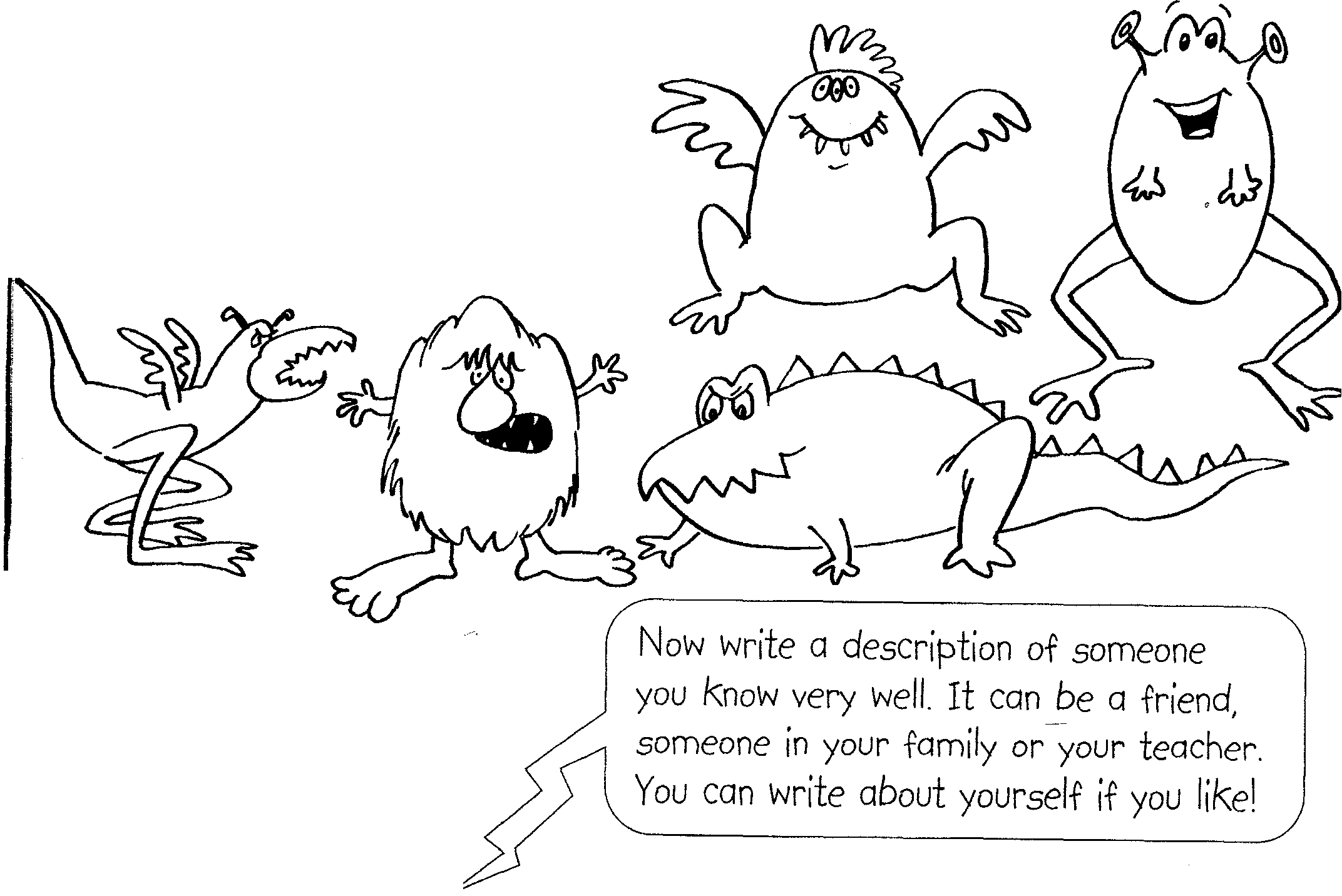
Topic: Houses and rooms.
The aim of the lesson: to teach students to write short stories using words necessary to describe houses and rooms.
1. Pre-reading activities
-
What things can scare you?
-
Where can you find them?
-
Can a house be frightening? Why?
-
What kind of houses do we call "Haunted houses"?
-
What can you find in a haunted house?
2.First reading. Read the story and answer the questions: Why was Bob scared? Where did he run? Did they find him in the house or at home? The Haunted House. We walked through the forest on a dark, dark night. The thunder went bang, Bob had a fright. Bob ran through the forest as fast as he could, into a house, at the edge of the wood. We ran after Bob and into the hall. We shouted his name, but heard nothing at all. We looked in the kitchen and there was a snake. Showing its fangs- what a noise we did make! We looked in the bathroom- do you know what we saw? Eight long legs in the bath, we were glad there weren't more! We looked in the study and saw a hard shell. What was inside it? A turtle! Well, well! We looked in the lab and there was a cat. And there on the table -a horrible rat! We looked here for hours and then we went home. We opened the door- there was Bob with a bone! 3.Reading and comprehension. I.Complete the sentences . Bob ran away because he . In the kitchen they did make noise because . There was an octopus in the bath and they saw . They understood that there was a turtle in the study because .
2. Do the task.
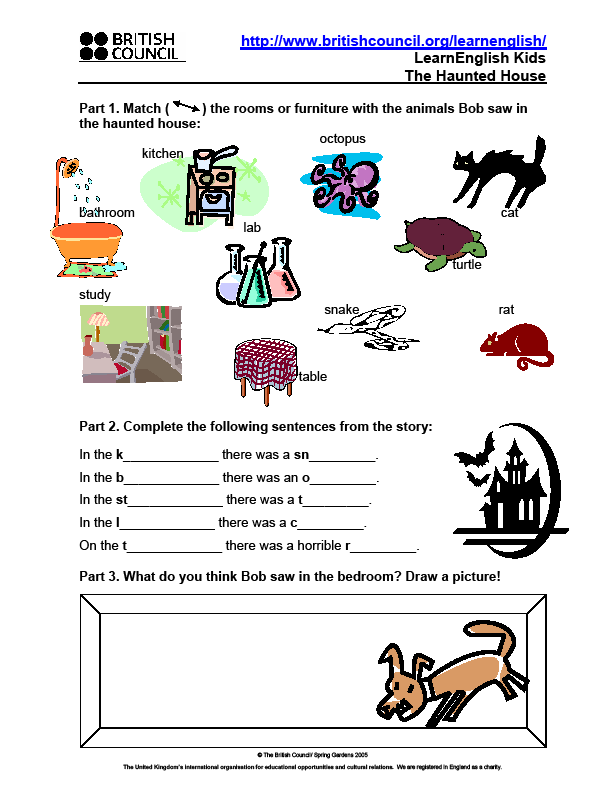
3. Creating your own story.
-
Where did you go? Why?
-
What did you see there?
-
What did I see in the bedroom?
-
How did I manage to find a bone?
Try to write this story as if you were Bob.
[ If there is enough time they can try to create their own story.]
Writing instructions.
Topic: Making Christmas prints.
Aim:
-
to teach students to write instructions (grammar, order, necessary parts of instructions)
-
use new words on the topic "Christmas".
Pre-reading activities
-
Answer the following questions:
-
Have you ever read any instructions?
-
What for did you read them?
-
Was it easy to understand? Why?
-
Why do we need instructions?
-
What do you expect to find in the instructions?
-
What parts does it usually consist of?
-
What kind of sentences do we use?
2. Look at this instruction (any sample). Were your answers correct?
(speak about different kinds of instructions)
Reading.
When you write instructions it is important to explain each step in the correct order. The use of pictures or diagrams often helps make things clearer.
How to make potato prints
What you need:
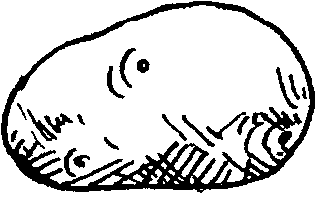


a knife
a felt- tip pen
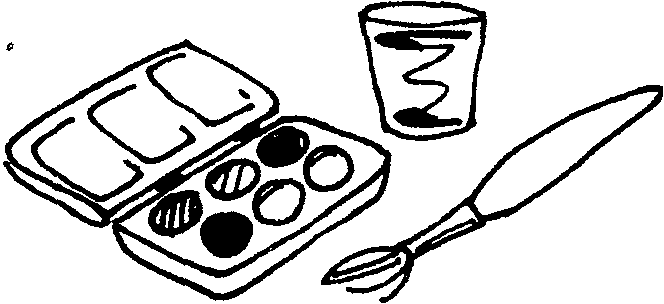
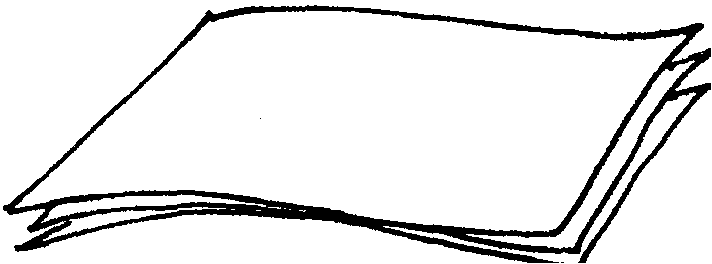
some paint, water and a brush
some paper to print on
What you do:
(NB Ask an adult to help you when you use the knife.)
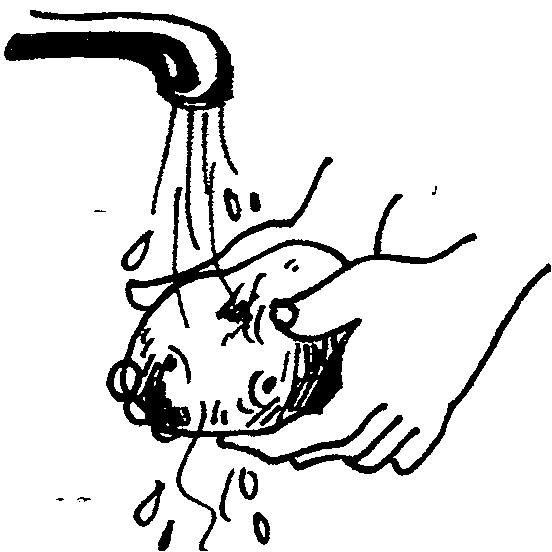
1 Wash the potato.
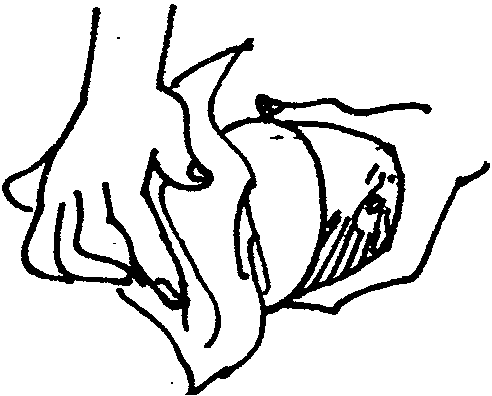
2 Cut the potato in half and dry it.
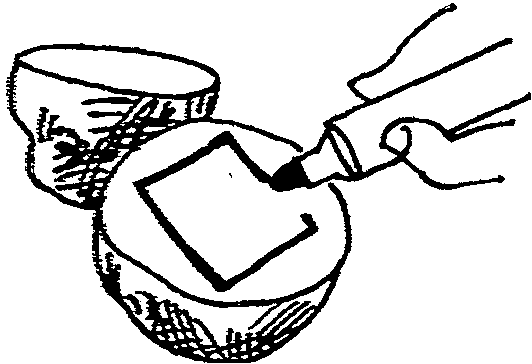
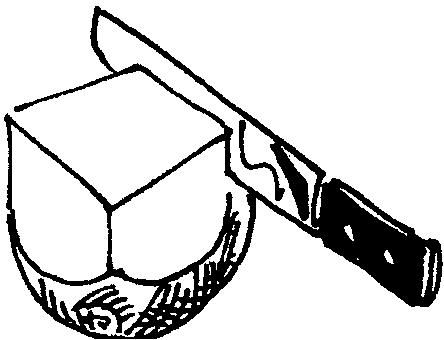
3 Use the felt-tip pen.
Mark a square on the flat side of one half-of the potato.
4 Cut off the outside bits of the potato to make it square.
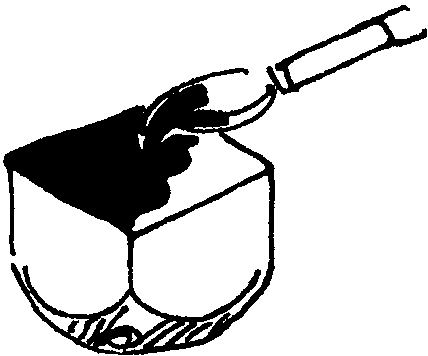
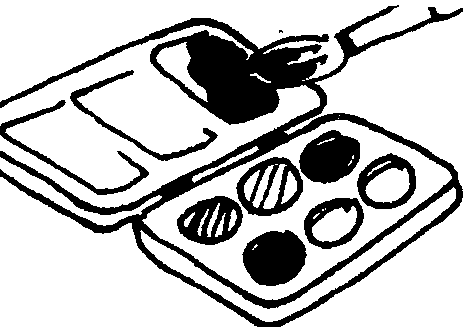
6 Mix some water-colour paint.
7 Paint the flat surface of the potato.

•
9 Press the painted surface of the potato firmly onto a sheet of paper.
10 Put more paint on the potato. Make a second print.

5 When you have finished, the potato will look like this.
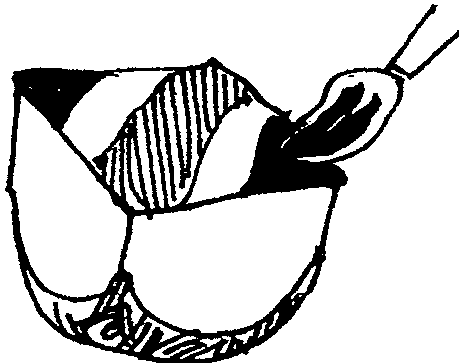
8 You can paint stripes on the potato, like this. Try using different colours .
11 Make a simple repeating pattern.
![]()
![]()
~
.12 Cut some different shapes on your potato. Have fun!
-
Use potato prints to make paper for wrapping gifts or for making a book cover.
-
Decorate envelopes or posters with potato prints .
Now try this
1. What are the instructions for?
2. List the things you need.
3. Why do you think there is a note about asking an adult to help? 4. a) Why are the instructions-numbered?
b) How does this help?
5. How do the diagrams help you understand the instructions better?
Read these mixed-up instructions for boiling an egg. Write them in the correct order.
How to boil an egg
-Now, simmer gently for three minutes.
-First, put some cold water in a saucepan.
-After the three minutes, turn off the heat.
-After this, lower the heat to simmer.
-Next, put the egg in the water.
-The egg is now ready to eat.
-Carefully, take the egg out of the water with a spoon.
-Then, heat the water till it boils.
Answer the questions, clarify the vocabulary and grammar. 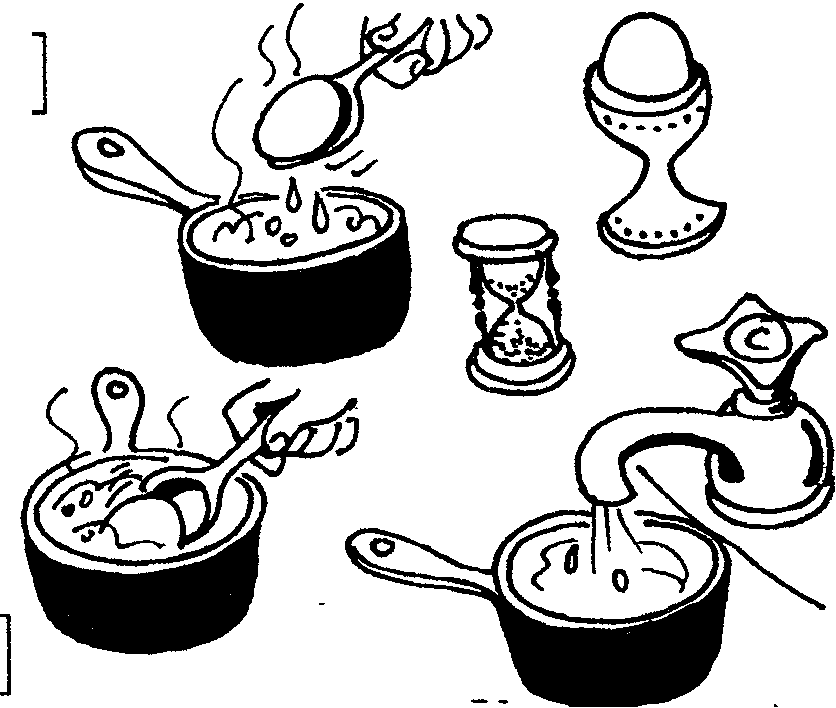
Writing: l. Write an instruction how to wash a car (in groups) 2. You can print with lots of things- apples, leaves, matchboxes, buttons, sponges. (make prints in the shape of a Christmas tree, a snowman, snowflakes)
Здесь представлен конспект к уроку на тему «Writing for», который Вы можете бесплатно скачать на нашем сайте. Предмет конспекта: Английский язык (7 класс). Также здесь Вы можете найти дополнительные учебные материалы и презентации по данной теме, используя которые, Вы сможете еще больше заинтересовать аудиторию и преподнести еще больше полезной информации.


